Planque and his friends
Planque met masters such as Jean Dubuffet, Pablo Picasso and Alberto Giacometti, but he maintained as well close relationships throughout his life with lesser-known artists as well, who were important to him in various ways. Walter Schüpfer was the first to guide him along the path of painting. It was Schüpfer who, a few years later, encouraged him to develop his talent for discovering new paintings. Finally, in 1954, it was Schüpfer who facilitated the meeting between Planque and the young Ernst Beyeler, who was just beginning his career as an art dealer in Basel.
As a collector, planque traded very little, and hardly ever sold what he had acquired. He always kept his first purchase, a very Cézanne painting by Paul Basilius Barth, acquired in 1937.
A painter himself, Planque maintained an equal relationship with his friends, defending their work by buying paintings and drawings from them or by talking about their art around him. This was particularly true of his friends Kosta Alex, Coghuf, Lélo Fiaux and Earl Kerkam, the unknown artist whom Planque fervently supported, unaware that he was “one of the most important artists the United States has yet to discover”, as Willem de Kooning and Mark Rothko wrote after his death.
He also encouraged and visited Hans Berger, a painter of the purest essence, right up to his last days.
What motivated his respect and admiration for them was their unconditional commitment to the artistic adventure.
Since January 27, 2024, a sample of Jean Planque’s “intime” selection and some of his personal works can be seen on the second mezzanine of the Chapelle des pénitents blancs in Aix-en-Provence.

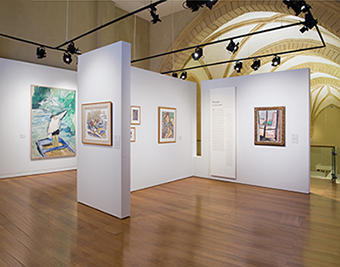
Chapelle des pénitents blancs
Aix-en-Provence, janvier 2024
© Alberto Ricci
Disparition de Claude Garache (1929-2023)
Jean Planque n’a pas connu les figures de Claude Garache. Mais il ne fait aucun doute que, placé devant elles, il aurait été saisi de cette attention intense, quasi religieuse qui caractérisait son regard dès qu’il était éveillé par le secret de telles images. Car, chez ce peintre, les nus sont des questions posées : en tout premier lieu, sans doute, à la beauté de la femme, à la nature qu’elle résume à ses yeux, mais aussitôt, dans le même moment, à l’équilibre des formes, à la pesanteur des corps, au toucher de la matière comme à la vibration de la lumière. Et que l’artiste revienne inlassablement au même thème, à ce rouge incarnat à quoi semble se réduire sa palette, et qui signifie la vie et son flux, n’aurait pu que fasciner le collectionneur aux yeux de qui, en fidèle disciple de Cézanne, le thème ne peut épuiser l’aventure du regard qui, tout au contraire, se nourrit du même pour accumuler les différences, et approcher de plus près la vérité. Car après qu’il s’est émerveillé devant la grâce offerte à ses yeux, le peintre a charge de trouver les moyens efficaces, d’abord pour s’en approcher lui-même, puis en transmettre aux autres la meilleure part. C’est là que Planque attend l’artiste au contour. Comment ce dernier s’y prend-il pour restituer sa « petite sensation » et nous la faire partager ? Garache, cela se reconnaît au premier regard, a longuement scruté son modèle, sa constitution, ses appuis et leurs possibles développements, jusqu’au moment où le caractère particulier mais essentiel de la figure induit le peintre à lui dicter une pose. Le corps féminin est dès lors soumis à des manipulations qui servent à exprimer à la fois son équilibre, son énergie et sa coloration intime. La main dessine au fur et à mesure qu’elle couvre la toile de directions cherchant le contrepoint idéal où la figure trouve à se déplier sans contrainte dans l’espace. Car aucune de ces femmes n’est immobile. Si l’on ressent fort la pesanteur qui les assoit au sol, le sang qui affleure sous l’épiderme, la chaleur qui se dégage de leurs membres les portent à la danse, à l’élévation. Le branle est donné. À partir de là, le regard ne cessera plus de se mouvoir, du centre du tableau vers ses bords dont les figures semblent souhaiter franchir les limites, de la surface zébrée de lumières au feu qui couve dans l’ombre des chairs. La toile, animée par les caresses du pinceau, par les traces de la brosse ou les frottements dessinés au chiffon – voire à la main – attire irrésistiblement le regard qui se laisse séduire par des effets tactiles de toutes sortes, traces, zébrures, flous, brillances et matités. Le champ pictural devient le lieu d’une circulation sensible déployant en les superposant toute une gamme de perceptions qui ne semble jamais s’épuiser : l’œil glisse à toute vitesse de la couleur à la matière, de la matière au volume, du volume à la ligne, de la ligne à la lumière, et de la lumière à la joie d’une juste distance. Car l’essentiel est qu’il faut que « cela » tienne, que la structure qui ordonne la composition ne détruise pas l’émotion initiale, qu’elle la prolonge au contraire dans un langage détaché et neuf mais cohérent. Ce sont les contours venant se perdre mollement dans le fond blanc, c’est l’exaltation du rouge dans les plis, ce sont les carnations se résorbant en des roses opalescents déposés sur la toile par des glacis d’une extrême délicatesse, qui font que la sève inonde la toile. Et que ces corps qui sont la vie, comme elle, se déplient, bondissent, se précipitent sans cesse vers l’avant, pour excéder toute mesure et déplacer le centre de gravité. Pour toutes ces raisons, on ne peut douter un instant que Jean Planque, s’il avait pu la connaître, aurait accueilli cette peinture à bras ouverts.

Questine, 1997
Huile sur toile
146 x 114 cm
(don de l’artiste à la fondation Planque)

Epigée rouge, dos, 2004
Huile sur toile
92 x 73 cm
(don de l’artiste à la fondation Planque)
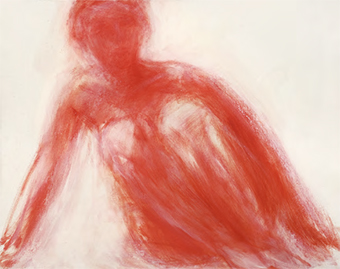
Obasine, 2004
Huile sur toile
92 x 73 cm
(collection particulière)
Né le 20 janvier 1929, ce grand peintre des nus féminins et des vibrations infinies du rouge a été défendu successivement par les galeries Maeght et Lelong et est présent dans les collections du Musée Picasso d’Antibes, du Musée d’Art Moderne de Paris, du centre Pompidou, du Musée Cantini de Marseille, de la Fondation Jean et Suzanne Planque à Aix et de la Fondation Maeght à Saint-Paul-de-Vence ou encore au Musée des Beaux-Arts de Dijon.
Une exposition rétrospective de ses oeuvres sur papier a lieu à la Maison Zervos à Vézelay jusqu’au 17 septembre.
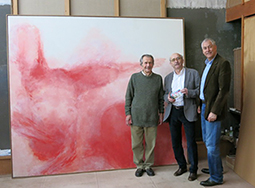
Dans son atelier de la rue du Cherche-Midi,
devant Osse et Bassoue, acquise par notre Fondation
From Tuesday 22 November, Large Bull, Sorel Etrog’s (1933-2014) impressive bronze sculpture from the Jean et Suzanne Planque Collection, is installed in the patio of the Musée Granet, Place Saint-Jean de Malte. It belongs to a series of works on this theme which the artist executed at the end of the 1960s.Having heard of Jean Planque’s enthusiasm for certain of his works—barely a few months before the collector died in a car crash—Sorel Etrog wished to honor Jean Planque’s memory by presenting his Foundation with a few pieces.
Thus as early as 2007 several drawings and sculptures entered the ensemble assembled by the Swiss collector and are regularly displayed in the Chapelle des Pénitents Blancs at the Musée Granet XXe.
From 31 March to 31 August 2023, an exhibition at the Chapelle des Pénitents Blancs offers a wide-ranging survey of the theme of the “Link,” a central topic in the work of this artist who sought throughout his oeuvre to gather together the pieces of a unity smashed in his early childhood during the pogroms perpetrated by the Nazis at Lași (Romania) in the Second World War, which his community and family were the victims of.
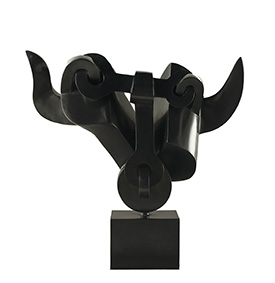
Large Bull, 1969
Bronze
Recent donation
Mouse Reymond-Rivier, Jean Planque’s close friend, has just given to our Foundation two paintings from Félix Vallotton.
The first one, Le Canal d’Hiver, has been realised when the painter went to Saint Petersburg during the winter 1913. It represents the canal between the Moika and the Neva, with the Hermitage’s bridge in second plan.
The second one, Composition avec figures, 1926, evoks some nudes in a naturalist landscape with intense colors and lots of mistery.
These two paintings are shown since mid-July in the Chapel of the Pénitents blancs.
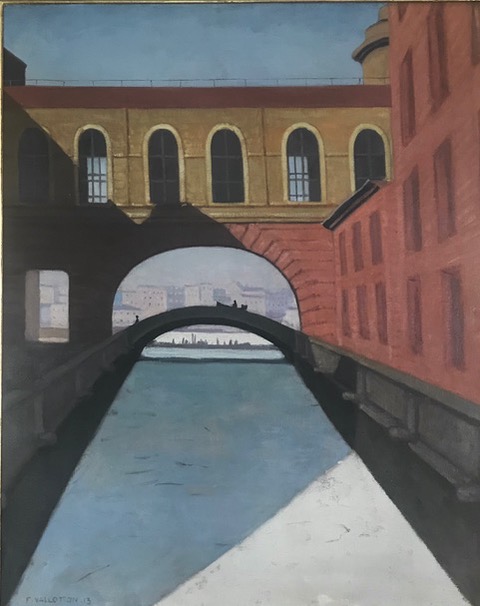
Félix Vallotton
Canal gelé et pont près de l’Hermitage, Pétersbourg, 1913
Oil on canvas
81 x 65 cm

Félix Vallotton
Paysage composé avec trois figures, 1923
Oil on canvas
65 x 81 cm
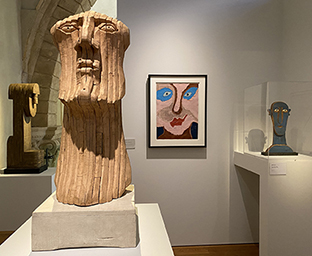
Kosta Alex, The Man of Kalahari, 1965
Wood
Donated by the artist to the Planque Foundation in memory of Jean Planque

Kosta Alex, presentation on the second floor of the Chapelle, spring 2021

Kosta Alex, Head, 1960
Wood
Donated by Agneta Siry
Painter, drawner, sculptor, engraver, ceramist, poet and photographer, Francisco Toledo was an artist engaged on all fronts. Prolific, he facilitated the cultural life of his native town, Oaxaca in Mexico, where he opened museums and studios. In 1960, he came to Paris in order to complete his studies, and his work is exhibited for the first time at the Flinker Gallery. That’s where Jean Planque discovered the work of this unknown artist of 20 years old.
Immediately fascinated by the universe of this artist, Planque bought several of his art pieces. The Swiss is seduced by this painting deeply attached to the earth values and, at the same time, full of strange figures that came from a shamanic world. This presentation in the Chapelle is a tribute to this great artist, just passed away.
On the second floor of the Chapelle, you can also discover some art pieces from Alexandre Hollan, recently donated by the artist to the Foundation Jean et Suzanne Planque.

Francisco Toledo
Figures and animals in the night, around 1965
Ink and Watercolor
23,8 x 31,5 cm

Alexandre Hollan
The “Déchêné” (grand chêne sur le plateau de Viols-le-fort), Spaces, 2003, Movement, 2014, Form, 2006
Gouache
Exhibition “Traverser la lumière” at the Piscine, Roubaix
After the Granet Museum, Aix-en-Provence, and the Kunstmuseum Pablo Picasso, Münster, the exhibition “Traverser la lumière” will be presented at the Piscine, Roubaix, from October the 19th of 2019 to February the 2d of 2020.
For this third stage, the corpus has been extended with loans from several Museum, in particular from Orsay Museum and Centre Pompidou, Paris.
A little exhibition about the Hem Chapel will be presented as well in the permanent collection spaces.
If you come to visite the exhibition, don’t miss the Hem Chapel, important place of the sacred art revival. In a building from Hermann Baur, Alfred Manessier has realized there remarquable stained glaces. A tapestry of the Sainte face from Rouault can be seen there as well.
The Swiss television has made an interesting report that you can see here.

South wall of the Hem Chapel, consacrée in 1958
Picasso, Homme et femme. Tête, on loan at the Vuitton Foundation, Paris, in the exhibition “Le nouveau monde de Charlotte Perriand” (2.10.19 – 24.02.20)
Jean Planque bought this painting at the Leiris Gallery – designed by Charlotte Perriand in 1989 – shortly after the death of his wife Suzanne: this late addition to his collection could be considered as a tribute to their couple.
Purchaser for the Beyeler Gallery in Basel from 1954 to 1972, Planque had close relations with the Leiris Gallery. Thanks to that great confidence the Leiris Gallery had with Planque, Beyeler was able to purchase in 1965 twenty paintings directly from Picasso that still remained faithful to his Parisian merchant. The day of this sale, Picasso explained to Beyeler, showing Planque: “You know, if I do that, it’s because I like him! ”
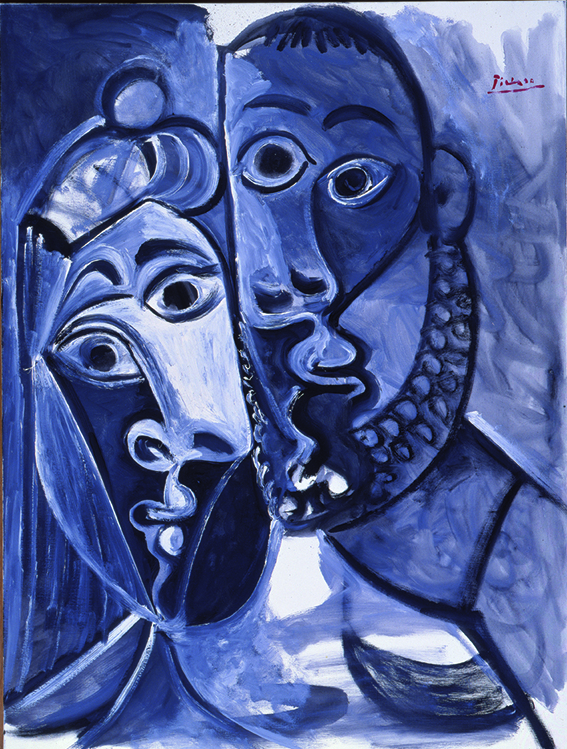
Homme et femme, tête, 1969
Oil on canvas
130 x 97 cm

View of the Leiris Gallery designed par Charlotte Perriand with Picasso, Homme et femme. Tête, on the wall.
DR
The association LES AMIS DE JEAN PLANQUE has just been created in Basel by some critics, collectors and art lovers from Switzerland.
Its goal is to help the acknowledgment of the Jean Planque’s work in the art world of his time, and in particular with the Ernst Beyeler Gallery from Basel.
The association wants to organize events around the Planque collection and to help the realization of the Jean and Suzanne Planque Foundation’s projects.

Jean Planque, at the beginning of the sixties, between Ernst Beyeler (on the right on this picture) and the pastor Paul Hassler, in the garden of this one in Basel.
The second venue of the exhibition “Traverser la lumière” will be hold from the 11th of May to the 29th of September 2019 in the Kunstmuseum Picasso Münster, Germany.
Alfred Manessier, one of the artists that we present in the exhibition, has realised several stained glass in the area. One of these realizations, in the church Unser Lieben Frauen in Bremen, is remarquable.

Alfred Manessier
L’assassinat de Monseigneur Romero, 1979
Aquarelle
77 x 58 cm
The travelling exhibition “Traverser la lumière” (The Passage of Light) is now open.
It defends the cause of a closely-knit group of French painters who, in the years immediately succeeding World War Two, preferred to have their works referred to as “non-figurative” rather than as “abstract.” They chose this name in opposition to the work of the masters of pure abstraction in the line of Kandinsky and Mondrian, as well as to the paintings of American “Abstract Expressionists” (Jackson Pollock, Willem de Kooning and others), whose canvases were sweeping Europe at the time. In addition to Roger Bissière, their oldest representative and in a sense their master, the “non-figurative” current included Jean Bazaine, Elvire Jan, Jean le Moal, Alfred Manessier and Gustave Singier.
Notwithstanding the support of a number of writers, collectors, critics and leading galleries like the Galerie Drouin, the Galerie de France, the Galerie Jeanne Bucher and the Galerie Maeght in Paris, their current has been unjustly neglected, especially from the 1970s on. The time seems ripe for reaffirming their importance.
It was in 1952 that Jean Planque, then still under Cézanne’s sway, discovered Alfred Manessier’s painting at the Galerie de France, a revelation that made a deep impression on him and marked a turn in his approach to modern art. “In front of those paintings I suddenly had an intuition of truth, of a non-figurative art capable of expressing things better and more strongly than figurative art,” he wrote in his journal in 1972.
Along with paintings by Bissière selected by Jean Planque, the core of the exhibition comprise approximately 100 works assembled by a Swiss collector, plus loans by several major museums. It runs at the Musée Granet (where the Planque Foundation is installed) in Aix-en-Provence from 9 November 2018 to 31 March 2019. It will then move to the Kunstmuseum Pablo Picasso in Münster, Germany (11 May-29 September 2019) and the city museum of La Piscine in Roubaix, France (18 October 1919-2 February 2020).
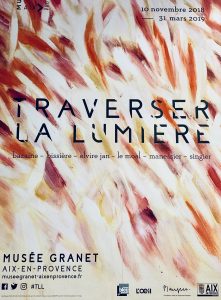
Poster of the exhibition
Detail of a work by Jean Bazaine, Chant de l’aube II, 1985
Private collection

Jean Le Moal
Composition, 1958
Automne, 1958-1960
Garrigue, 1959
Private collection
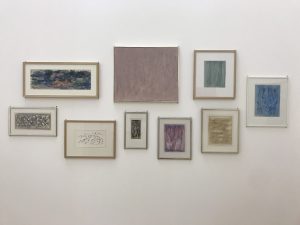
Elvire Jan
Works presented in the exhibition
Private collection
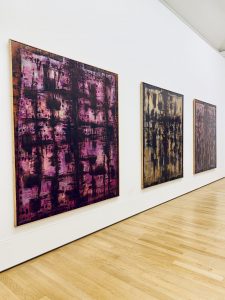
Alfred Manessier
View of the room where the 4 Passions of 1986 are presented
Sion, musée d’Art